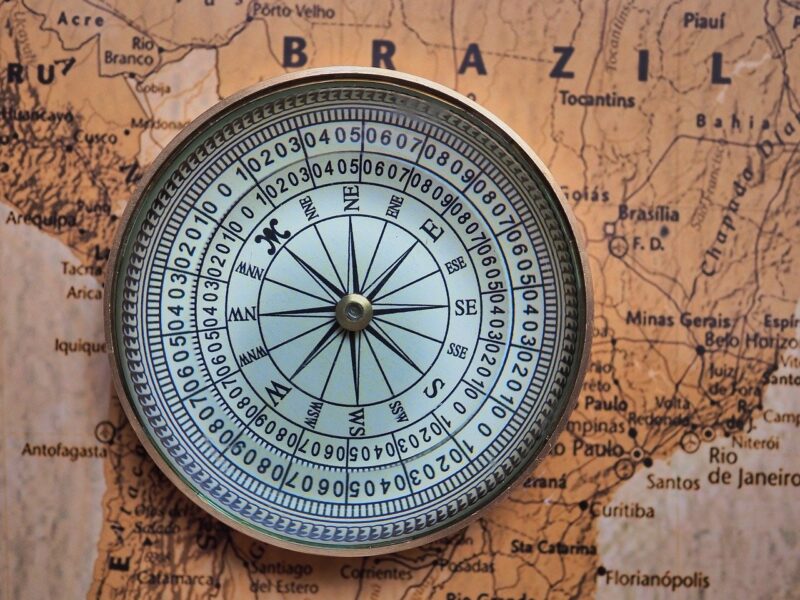How the Compass Shaped the World’s Most Famous Explorations
November 17, 2024

Throughout history, explorers have ventured into the unknown, driven by curiosity, ambition, and a quest for knowledge. One indispensable tool that revolutionized navigation and opened up new horizons was the magnetic compass. This fascinating instrument not only changed the course of exploration but also shaped global trade, colonization, and cultural exchanges. In this article, we will explore how the compass influenced some of history’s most significant explorations and how it remains relevant today.
1. The Invention of the Compass
The compass, as we know it today, has its origins in ancient China during the Han Dynasty (circa 206 BC to 220 AD). The first compasses were made from lodestone, a naturally magnetized iron ore that aligns itself north-south in the Earth’s magnetic field. The early versions were not as precise as modern compasses, but they marked a significant advancement in navigation technology.
In the 11th century, the Chinese invented the first magnetic compass for maritime use, called the “south-pointing needle.” This magnificent tool allowed sailors to navigate vast and treacherous waters, enabling them to undertake voyages beyond sight of land.
2. The Compass and the Age of Exploration
The Age of Exploration, spanned from the late 15th century to the early 17th century, was characterized by European powers seeking new trade routes, territories, and resources. The magnetic compass played a pivotal role in these momentous journeys.
For example, Christopher Columbus’s expeditions in 1492 were bolstered by the use of a compass, which assisted him in traveling across the Atlantic Ocean. Without the compass, it is doubtful he would have reached the Americas, forever altering the course of history.
Similarly, Vasco da Gama was able to successfully navigate around the Cape of Good Hope to reach India due to his reliance on the compass. This established a sea route from Europe to Asia, paving the way for increased trade and cultural interactions.
3. Magellan’s Circumnavigation and the Compass
One of the most audacious exploratory feats in history was Ferdinand Magellan’s circumnavigation of the globe from 1519 to 1522. Magellan’s fleet of five ships faced numerous challenges, including mutinies, treacherous waters, and harsh weather conditions, but the compass was an invaluable asset throughout the journey.
Using the compass, Magellan calculated his course across uncharted territories, including the Pacific Ocean, which was completely unknown to European navigators at the time. His voyage also proved the Earth’s roundness, as his fleet eventually returned to Spain, completing the first circumnavigation of the globe.
4. The Compass and the Expansion of Trade Routes
As explorers ventured into new territories, the compass facilitated the establishment of trade routes that connected different continents. The ability to navigate accurately led to an increase in maritime commerce, with merchants transporting goods such as spices, textiles, precious metals, and even ideas across oceans.
For instance, the Dutch East India Company utilized advanced navigational tools, including the compass, to dominate trade between Europe and Asia in the 17th century. With the help of the compass, merchant ships could travel further and deliver goods directly to European markets, ultimately changing the economic landscape.
5. Legacy of the Compass in Modern Navigation
Today, the magnetic compass remains an essential tool for navigation, albeit in an evolved form. While we have replaced it with sophisticated GPS technology and digital navigation systems, the compass’s basic principles still apply.
In various outdoor activities such as hiking, sailing, and geocaching, the compass is often the go-to navigation device for adventurers striving to reconnect with traditional skills. The simple act of orienting oneself with a compass continues to symbolize exploration and self-discovery in our modern world.
6. The Cultural Impact of Exploration
The compass not only influenced physical voyages but also ushered in significant cultural changes. As explorers returned from their journeys with new knowledge and discoveries, they sparked curiosity and a desire for adventure in Europe and beyond. This led to broader cultural exchanges and the sharing of ideas, art, and technology among previously isolated regions.
The Age of Exploration was characterized by an increased understanding of geography, which laid the groundwork for the modern world. In addition, it led to the study of other cultures, languages, and traditions, broadening humanity’s horizons.
Conclusion
The compass has undoubtedly shaped the course of human history, driving exploration and discovery throughout the ages. Its role in navigating uncharted waters and establishing trade routes transformed economies and cultures globally. As we continue to explore our planet and beyond, the legacy of the compass remains, serving as a reminder of our innate desire to discover the unknown and broaden our understanding of the world.
Whether in a historical context or a modern-day adventure, the compass will always be a symbol of exploration, curiosity, and the relentless pursuit of knowledge.
As we look to the future, one can only imagine what new tools and technologies will guide the next generation of explorers on their quests. The compass was just the beginning.








